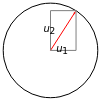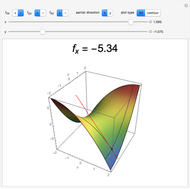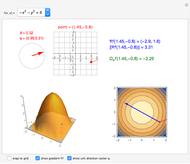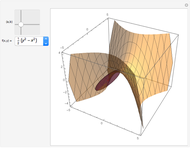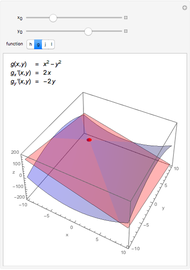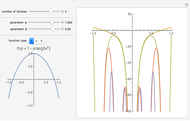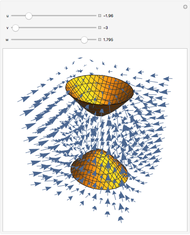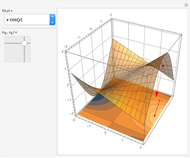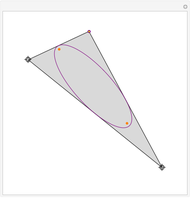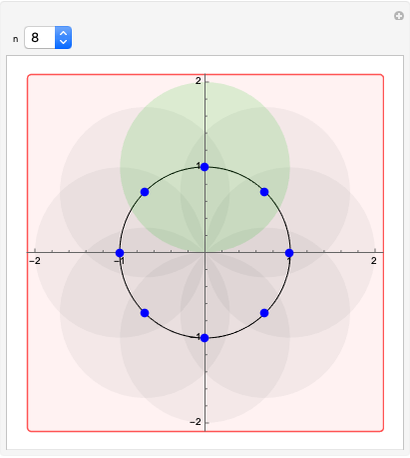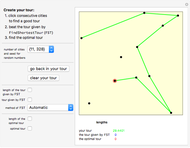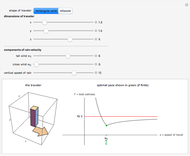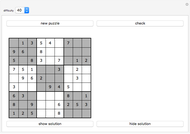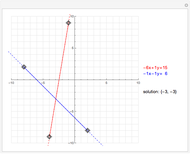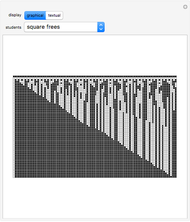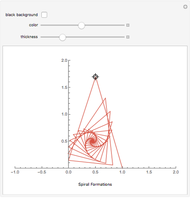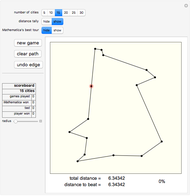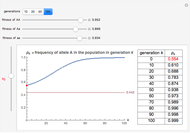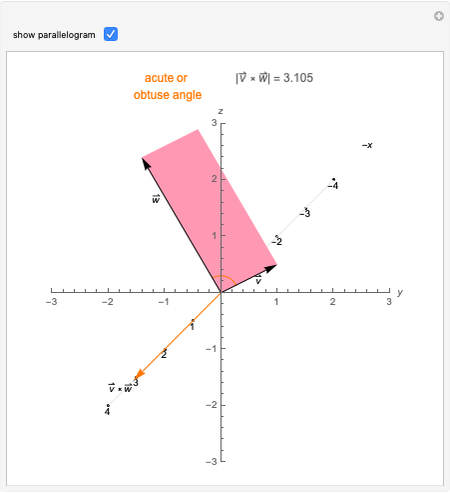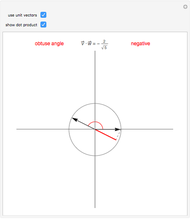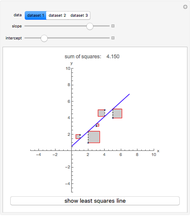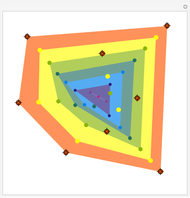Directional Derivatives and the Gradient
Initializing live version

Requires a Wolfram Notebook System
Interact on desktop, mobile and cloud with the free Wolfram Player or other Wolfram Language products.
This Demonstration visually explains the theorem stating that the directional derivative  of the function
of the function  at the point
at the point  ,
,  ) in the direction of the unit vector
) in the direction of the unit vector  is equal to the dot product
is equal to the dot product  of the gradient of
of the gradient of  with
with  . If we denote the partial derivatives of
. If we denote the partial derivatives of  at this point by
at this point by  and
and  and the components of the unit vector
and the components of the unit vector  by
by  and
and  , we can state the theorem as follows:
, we can state the theorem as follows:
Contributed by: Bruce Torrence (March 2011)
Open content licensed under CC BY-NC-SA
Snapshots
Details
Permanent Citation
